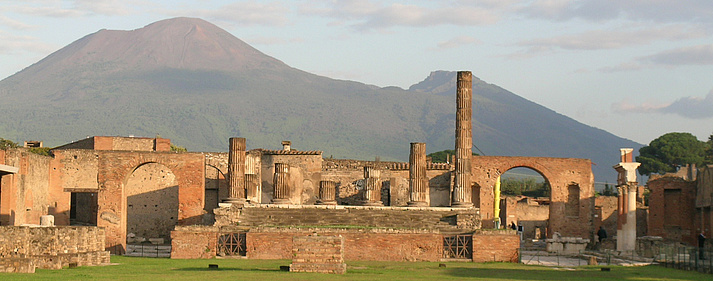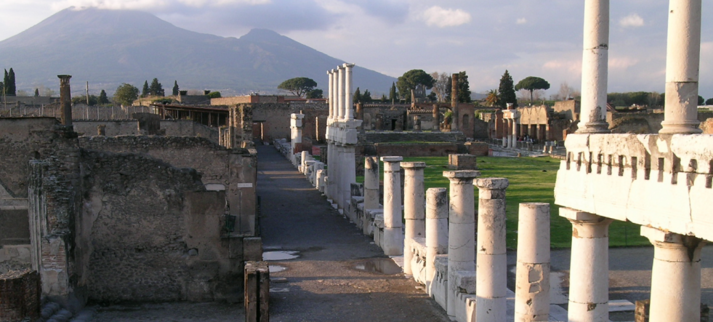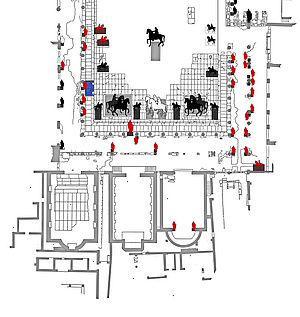Forum of Pompeii
It was only more than 60 years after the onset of excavations in Pompeii, between 1814 and 1816, that the city’s Forum and with it its administrative and communicative heart was exposed. Since until this point in time no other Roman Forum had been excavated, the Forum of Pompeii was of particular importance, not only in the books on ancient architecture but also in the modern debate on urban development, where it was instanced a good example of a central, monumental square.

Although the Forum’s significance is noted in every monograph and each travel guide, it turned out that the documentation of the excavation’s state would not meet current standards. Therefore, a documentation of the pavement was planned in a first step, as well as of the five arches.
At the suggestion of the Soprintendenza later on also the older history of the square at the Forum’s southern boarder was able to be investigated by spatially restricted excavations.
For the first time the Forum’s preserved paving was precisely documented with photographs and drawings. Numerous traces were found of dismantled, moved and subsequently placed sculptures and fountains. So far the square’s furnishing had been seen as quite static, but now an unexpected dynamic of redesigning and changes of use till the city’s later years is evident. The locations where sculptures were placed allow for conclusions on the significance of individual buildings and the movements of the square’s users.
Klaus Müller was able to document and investigate Pompeii’s arches with regard to their building history for the first time. This finally resulted in precise clues for a dating of the arches where so far only few reliable historic combinations were stated. Here too, numerous changes and restructurings became evident and their urban significance apparent.
Finally, the restricted excavations on the square’s southern border succeeded in exposing the historic construction sequences. An expansion of the square unknown so far allowed for erecting three representative public halls around the Mid-Augustan period. Today, a vibrant construction activity can be proven here as well, lasting until the day of the eruption of the Vesuvius: a trench for installing a new water pipe was left uncovered in the fall of 79 AD.

Literature
Kockel, Valentin, Altes und Neues vom Forum und vom Gebäude der Eumachia in Pompeji, in: Richard Neudecker – Paul Zanker (Hrsg.), Lebenswelten. Bilder und Räume in der römischen Stadt der Kaiserzeit (Palilia 16), Wiesbaden 2005, 51–72 (full text).
Ders. – Flecker, Manuel, Forschungen im Südteil des Forums von Pompeji. Ein Vorbericht über die Arbeitskampagnen 2007 und 2008, Mitteilungen des Deutschen Archäologischen Instituts, Römische Abteilung 114, 2008, 271–03.
Ders., Das Forum von Pompeji, in: Akademie aktuell, 43, 2012, H. 4, 12–17.
Müller, Klaus, mit Beiträgen von Valentin Kockel, Die Ehrenbögen in Pompeji. Studien zur antiken Stadt 10, Wiesbaden 2011 (see Publications).
Further Information
The Project
Project Lead
Prof Dr. Valentin Kockel
Klassische Archäologie
Universität Augsburg
86135 Augsburg
E-Mail
Together with Dipl.-Ing. Rainer Zahn; Dr.-Ing. Klaus Müller; Dr. Manuel Flecker; Dr. Christoph Rummel
Funding
This Project is funded by the Bavarian Academy of Sciences and Humanities, the Deutsche Forschungsgemeinschaft (DFG) and the Fritz Thyssen Foundation.

